Profit from Trash? Know How to Incorporate Reverse Logistics
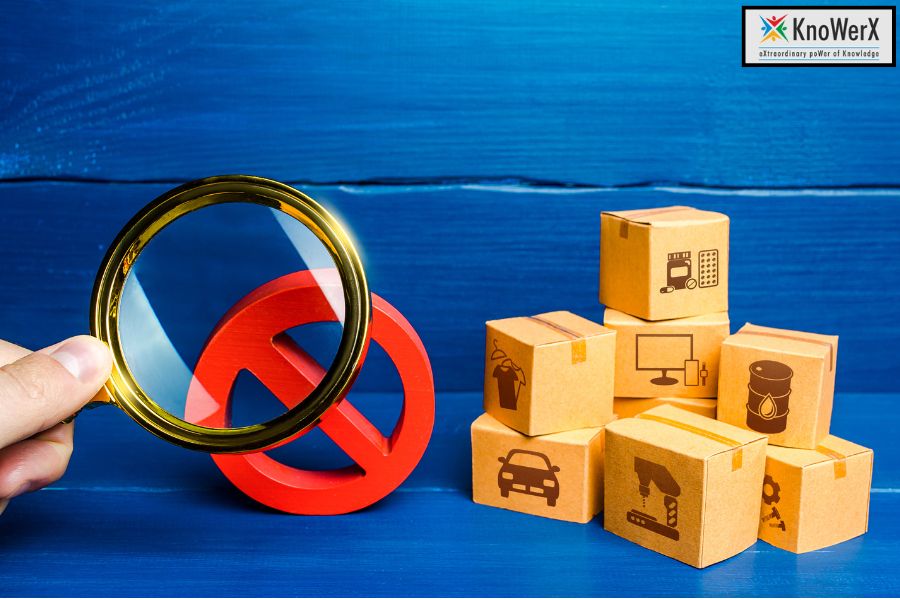
Profit from Trash? Know How to Incorporate Reverse Logistics Companies are coming to see reverse logistics more and more as a way to convert waste into profit in the ever-changing supply chain environment of today. With more than 33 years of combined experience, KnoWerX, a pioneer in Supply Chain Management Training, helps professionals to understand techniques such reverse logistics for sustainable success. The following useful advice will enable you to include reverse logistics into your operations, hence promoting environmental responsibility, cost reductions, and efficiency. 1. Understand the Scope of Reverse Logistics To effectively incorporate reverse logistics, start by defining its scope within your organization. Reverse logistics involves managing the return, reuse, recycling, or disposal of products after their initial sale. Assess your product lifecycle to identify opportunities for returns, refurbishment, or recycling. This foundational step ensures you create a streamlined process that maximizes value recovery. 2. Design a Customer-Centric Returns Process A seamless returns process is key to customer satisfaction and operational efficiency. Incorporate reverse logistics by implementing clear return policies, user-friendly return portals, and efficient collection mechanisms. Train your team to handle returns swiftly, ensuring products are inspected and redirected for resale, refurbishment, or recycling, minimizing losses. 3. Leverage Technology for Tracking and Transparency Technology is a game-changer when you incorporate reverse logistics. Use advanced tracking systems, such as RFID or barcode scanning, to monitor returned goods throughout the supply chain. Implement software solutions to analyze return data, identify patterns, and optimize processes. KnoWerX’s training programs emphasize leveraging such tools to enhance visibility and decision-making. 4. Optimize Inventory Management for Returned Goods Returned products can clog inventory if not managed properly. Incorporate reverse logistics by categorizing returns based on their condition resalable, refurbishable, or recyclable. Integrate these items back into your inventory or redirect them to secondary markets. Effective inventory management reduces waste and unlocks hidden revenue streams. 5. Partner with Recycling and Refurbishment Experts Collaborating with specialized partners can amplify your efforts to incorporate reverse logistics. Work with recycling firms, refurbishment centers, or third-party logistics providers to handle end-of-life products. These partnerships ensure compliance with environmental regulations and enhance your ability to recover value from discarded goods. 6. Educate Your Team on Reverse Logistics Best Practices A well-trained team is critical to successfully incorporate reverse logistics. Equip your staff with the knowledge to manage returns, assess product conditions, and execute sustainable practices. KnoWerX offers professional training programs that cover reverse logistics in-depth, empowering your team to drive profitability through efficient processes. 7. Measure and Improve Performance To ensure long-term success, incorporate reverse logistics by establishing key performance indicators (KPIs) such as return rates, recovery rates, and cost savings. Regularly analyze these metrics to identify areas for improvement. Continuous evaluation allows you to refine your reverse logistics strategy, aligning it with business goals. Frequently Asked Questions Ending Notes At KnoWerX, our 26+ years in education and consultancy enable us to deliver high-quality, practical training tailored to your needs. Our programs help professionals master how to incorporate reverse logistics, transforming waste into profit while fostering sustainability. With a commitment to excellence and affordability, KnoWerX is your trusted partner for supply chain success. By implementing these tips, you can incorporate reverse logistics to not only reduce waste but also unlock new revenue streams, proving that trash can indeed be turned into treasure. Enroll in KnoWerX’s Supply Chain Management Training today to gain the expertise needed to excel in this transformative field! Image Reference: Freepik Disclaimer: All trademarks, logos, and brand names are the property of their respective owners. All company, product, and service names used in this website are for identification purposes only. Use of these names, trademarks, and brands does not imply endorsement.
Why a Supply Chain Career is Your Best Bet

Why a Supply Chain Career is Your Best Bet A career in supply chain management opens doorways, stability, and influence in the fast-evolving, interrelated world of today. With more than 33 years of combined knowledge in Supply Chain Management Training, KnoWerX empowers people to succeed by means of best-quality education and credentials. These are our greatest suggestions to grasp why a Career in Supply Chain Management is your best option right now and how KnoWerX can lead you to success. High Industry-Wide Demand Retail, manufacturing, healthcare, and e-commerce among others depend on strong supply chains. Technological developments and globalisation have pushed businesses to aggressively look for competent people to maximise operations, reduce expenses, and guarantee efficiency. From logistics coordinators to supply chain analysts, a career in supply chain management presents varied responsibilities with reasonable pay and development prospects. KnoWerX’s training gives you the knowledge to satisfy this need. Economic Change Resilience Even in times of economic uncertainty, supply chain experts are absolutely essential. The COVID-19 epidemic highlighted the vital need of supply chains in maintaining the flow of products and services. A career in supply chain management places you in a recession-resistant sector where your abilities are constantly sought. KnoWerX’s initiatives guarantee your readiness for any financial scene. Imaginative Possibilities Supply chain processes are being transformed by technologies like artificial intelligence, blockchain, and IoT. A Supply Chain Career puts you at the forefront of innovation, allowing you to use modern ideas to simplify procedures and improve sustainability. KnoWerX’s training courses equip you with the knowledge to use these tools efficiently, helping you stay ahead in this tech-driven sector. Worldwide Job Opportunities Inherently worldwide, supply networks link people, manufacturers, and customers all across borders. A career in supply chain management lets you collaborate with multinational companies or move overseas, opening doors to worldwide possibilities. KnoWerX’s internationally known certificates provide you an advantage in the worldwide employment market. Employers all around trust our credentials. Different Skill Development A Supply Chain Career hones a wide spectrum of abilities including problem-solving, strategic thinking, data analysis, and leadership. From negotiating with suppliers to inventory optimisation, you will acquire flexible knowledge applicable across sectors. KnoWerX’s professional training guarantees you master these abilities through practical, industry-relevant education. Our courses aim to create well-rounded peopl Good Salary and Growth With entry-level jobs offering strong starting pay and top roles like Supply Chain Managers earning excellent salaries, a Supply Chain Career provides appealing compensation. Pursuing a Supply Chain Career offers rapid professional growth as companies prioritize efficiency. KnoWerX’s certificates enhance your qualifications, positioning you as a top contender for leadership roles and promotions. Our training empowers you to maximize your earning potential in a Supply Chain Career. Make a Genuine Difference Your efforts in supply chain management immediately affect a company’s performance and client happiness. You help to significant results by means of timely deliveries and environmental impact reduction. KnoWerX’s training stresses excellent practices so you may promote good transformation in your company. Your work creates a better future for companies and communities. Frequently Asked Questions Ending Notes KnoWerX, your reliable partner in developing a successful Career in Supply Chain Management, with 26+ years in teaching and consulting. Designed by professionals who have trained and advised for leading firms in India and internationally, our expert-led programs provide high-quality, affordable education. We offer the tools, credentials, and subject expertise required to succeed in this expanding sector. Begin your path with KnoWerX now to discover the limitless potential of a Career in Supply Chain Management! Image Reference: Freepik Disclaimer: All trademarks, logos, and brand names are the property of their respective owners. All company, product, and service names used in this website are for identification purposes only. Use of these names, trademarks, and brands does not imply endorsement.
Don’t Let Examples of Demand Forecasting Fail!

Don’t Let Examples of Demand Forecasting Fail! Here are some mind-blowing tips on Examples of Demand Forecasting from KnoWerX, your trusted industry leader in Supply Chain Management Training. Through our Professional Training programs and high-quality education, we empower professionals to achieve success and excellence. With over 33 years of collective experience and 26+ years in education and consultancy, our experts have guided major companies in India and abroad to build their expertise. We are committed to delivering the best quality education at the most competitive prices, making KnoWerX your one-stop destination for learning best practices, acquiring domain knowledge, and earning relevant certifications. Leverage Historical Data for Predictive Power One of the most astonishing Examples of Demand Forecasting is using historical sales data with advanced analytics. At KnoWerX, we teach professionals to analyze past trends to predict future demand with uncanny accuracy, helping businesses stay ahead of market shifts. This approach also minimizes overstocking and enhances profitability with precise inventory control. Harness AI and Machine Learning Innovations An eye-opening Example of Demand Forecasting is the use of AI-driven tools. Our training programs at KnoWerX guide you to implement machine learning models that adapt to real-time data, revolutionizing inventory planning like never before. This technology also identifies subtle patterns that human analysis might miss, boosting forecast reliability. Simulate Seasonal Demand Spikes A surprising Example of Demand Forecasting involves simulating seasonal trends. KnoWerX experts train you to create scenarios that predict holiday surges or off-season dips, ensuring your supply chain remains resilient and profitable. This method also allows for proactive resource allocation, keeping your operations smooth year-round. Integrate Point-of-Sale Data for Real-Time Insights One of the most impressive Examples of Demand Forecasting is integrating POS data. Through KnoWerX’s high-quality education, learn to use real-time sales inputs to adjust forecasts instantly, keeping your business agile and responsive. This technique also reduces waste by aligning stock levels with actual consumer behavior. Collaborate with Suppliers for Holistic Forecasts A game-changing Example of Demand Forecasting is collaborating with suppliers. At KnoWerX, we emphasize building partnerships to share data, creating forecasts that align the entire supply chain for maximum efficiency. This collaboration also fosters innovation, as joint insights lead to better product offerings and market strategies. Use Weather Patterns to Anticipate Demand An unexpected Example of Demand Forecasting is factoring in weather data. Our Professional Training at KnoWerX equips you to predict demand for seasonal products like umbrellas or heaters, giving your business a competitive edge. This approach also helps in planning marketing campaigns tailored to weather-driven consumer needs. Apply Scenario Planning for Uncertainty A brilliant Example of Demand Forecasting is scenario planning for unpredictable events. KnoWerX’s expert-led programs teach you to prepare multiple demand scenarios, safeguarding your operations against disruptions. This strategy also builds confidence among stakeholders by showcasing preparedness for any market condition. Frequently Asked Questions Ending Remarks Mastering the Examples of Demand Forecasting can revolutionize your supply chain strategy and drive business success. At KnoWerX, with our 33+ years of expertise and 26+ years in education and consultancy, we empower professionals with top-tier training and certifications at competitive prices. Whether you leverage AI, historical data, or supplier collaboration, our programs equip you to turn forecasts into actionable insights. Join KnoWerX today and elevate your career while building a resilient, profitable future! Image Reference: Freepik Disclaimer: All trademarks, logos, and brand names are the property of their respective owners. All company, product, and service names used in this website are for identification purposes only. Use of these names, trademarks, and brands does not imply endorsement.
Dominate Supply Chains With This Genius Logistics Framework
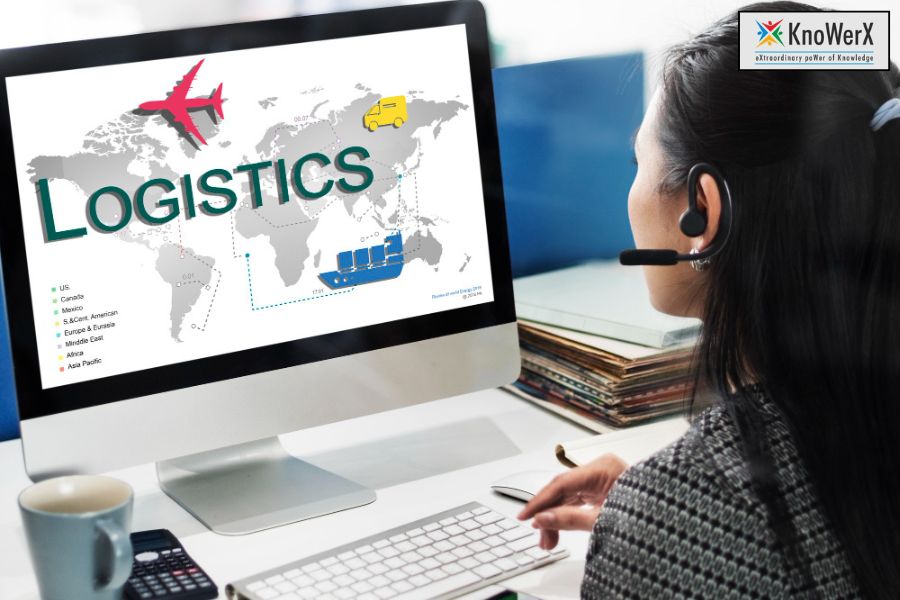
Dominate Supply Chains With This Genius Logistics Framework The global supply chain landscape is undergoing a radical transformation, driven by technological advancements and shifting market demands. At KnoWerX, with our 33+ years of industry expertise, we recognize that adopting the right Logistics Framework is no longer optional it’s the key differentiator between thriving businesses and those struggling to keep pace. This revolutionary approach integrates cutting-edge technologies, data-driven strategies, and sustainable practices to create agile, efficient, and future-ready supply chains. Whether you’re a logistics professional, supply chain manager, or business leader, understanding and implementing this Logistics Framework will position you at the forefront of industry innovation. Below, we break down the essential strategies that make this framework a game-changer. 1. Embrace Digital Integration A modern Logistics Framework thrives on digital tools like IoT, AI, and blockchain. Automating processes reduces errors and speeds up operations. By integrating real-time tracking and automated decision-making, businesses can respond faster to disruptions. Digital transformation also enhances visibility across the entire supply chain, making it easier to identify bottlenecks and optimize workflows. 2. Optimize Warehouse Management Implement smart warehousing solutions within your Logistics Framework to enhance inventory tracking, reduce waste, and improve order fulfillment. Advanced technologies like RFID and automated storage systems can drastically cut down manual labor and errors. A well-structured warehouse layout, combined with data-driven insights, ensures faster picking, packing, and shipping processes. 3. Strengthen Supplier Collaboration A robust Logistics Framework fosters real-time communication with suppliers, ensuring transparency and minimizing delays. Building strong partnerships with reliable vendors helps in negotiating better terms and securing priority during high-demand periods. Collaborative platforms and shared dashboards enable seamless coordination, reducing lead times and improving supply chain resilience. 4. Leverage Data Analytics Use predictive analytics within your Logistics Framework to forecast demand, optimize routes, and reduce costs. Historical data combined with machine learning can help anticipate market trends and adjust inventory levels accordingly. Real-time analytics also enable dynamic rerouting of shipments to avoid delays, ensuring on-time deliveries and higher customer satisfaction. 5. Focus on Sustainability & Green Logistics An advanced Logistics Framework should prioritize eco-friendly practices to meet modern regulatory and consumer demands. Implementing electric fleets, optimizing delivery routes for fuel efficiency, and using recyclable packaging can significantly reduce carbon footprints. Sustainable logistics not only benefits the environment but also enhances brand reputation and can lead to long-term cost savings through energy-efficient operations. 6. Enhance Last-Mile Delivery Solutions The last mile is often the most expensive and challenging part of logistics. A smart Logistics Framework incorporates innovative last-mile strategies like drone deliveries, micro-fulfillment centers, and crowdshipping to cut costs and improve speed. Leveraging AI-powered route optimization and real-time tracking ensures faster, more transparent deliveries, leading to higher customer satisfaction and repeat business. Frequently Asked Questions Ending Remarks At KnoWerX, we empower professionals with the knowledge and tools to master these innovations through our industry-leading Supply Chain Management Training programs. Whether you’re looking to upskill or transform your organization’s logistics approach, our expert-led courses provide the actionable insights you need to succeed. Ready to revolutionize your supply chain? Enroll with KnoWerX today and lead the change in the logistics evolution! Image Reference: Freepik Disclaimer: All trademarks, logos, and brand names are the property of their respective owners. All company, product, and service names used in this website are for identification purposes only. Use of these names, trademarks, and brands does not imply endorsement.
How Global Supply Chain at Risk from Rising Tariffs
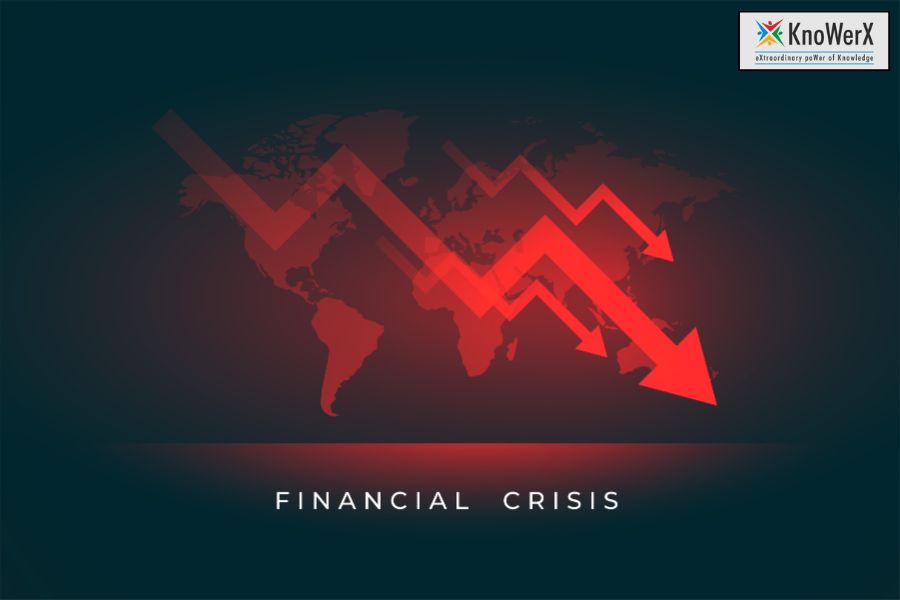
How Global Supply Chain at Risk from Rising Tariffs The introduction sets the stage by defining tariff hikes as increases in taxes imposed on imported or exported goods, which directly affect the Global Supply Chain. It highlights the critical role of the Global Supply Chain in enabling the seamless flow of goods, services, and raw materials across borders. Tariff hikes disrupt this interconnected network by raising costs and creating inefficiencies. This section provides a brief overview of how these disruptions ripple through industries, setting up the need to explore their mechanisms and solutions. II. Mechanisms of Disruption This section delves into how tariff hikes destabilize the Global Supply Chain through multiple channels: Increased Costs: Tariff hikes elevate the cost of importing raw materials and exporting finished goods, squeezing profit margins. For example, manufacturers reliant on the Global Supply Chain for components face higher production costs, which may be passed to consumers, affecting competitiveness. Supply Chain Bottlenecks: The Global Supply Chain experiences delays as customs processes become more complex due to tariff-related compliance. These bottlenecks disrupt logistics, causing inventory shortages or overstocking, which further strains the Global Supply Chain. Market Uncertainty: Tariff hikes introduce volatility in the Global Supply Chain by making demand and supply unpredictable. Businesses struggle with forecasting, leading to inefficiencies in production and distribution planning. Trade Relationship Strain: Retaliatory tariffs from trading partners exacerbate disruptions in the Global Supply Chain. This tit-for-tat escalation erodes trust, complicating long-term partnerships and trade agreements essential for a stable Global Supply Chain. III. Case Studies This section illustrates real-world impacts of tariff hikes on the Global Supply Chain through two examples: U.S.-China Trade War (2018-2020): Tariffs imposed during this period disrupted the Global Supply Chain for industries like electronics and agriculture. For instance, higher costs for imported components forced manufacturers to seek alternative suppliers, creating delays and inefficiencies in the Global Supply Chain. Recent Tariff Hikes in [Specific Region/Industry]: This placeholder for a current example (e.g., tariffs on steel in Europe) highlights ongoing challenges. It examines how specific sectors face supply shortages or cost spikes, underscoring the broader vulnerability of the Global Supply Chain to policy shifts. IV. Steps to Mitigate and Fix Disruptions This section outlines actionable solutions to address tariff-related disruptions in the Global Supply Chain: Short-Term Solutions: Businesses can diversify suppliers to reduce reliance on tariff-affected regions, ensuring continuity in the Global Supply Chain. Stockpiling critical inventory and renegotiating contracts to share cost burdens also help mitigate immediate impacts. Long-Term Strategies: Relocating manufacturing to regions with favorable trade policies strengthens the Global Supply Chain’s resilience. Investing in automation reduces dependency on imported goods, while advocating for stable trade agreements minimizes future disruptions. Collaboration and Policy Advocacy: Industry associations can collectively lobby for tariff reductions, supporting a smoother Global Supply Chain. Engaging policymakers ensures businesses’ concerns are addressed. Technology and Innovation: AI-driven analytics enhance visibility in the Global Supply Chain, enabling proactive adjustments. Blockchain ensures transparent trade documentation, reducing delays and costs. V. Economic and Social Impacts This section focuses on the broader consequences of tariff hikes beyond operational disruptions, examining their effects on economies and societies. Economic Consequences: Reduced Competitiveness of Affected Industries: Tariff hikes increase the cost of goods, making products from affected industries (e.g., manufacturing, agriculture) less competitive in global markets. For example, higher tariffs on imported steel can raise production costs for automakers, leading to higher prices and reduced market share. Potential Job Losses Due to Cost Pressures: As companies face squeezed margins from increased costs, they may cut jobs or halt expansion to remain profitable. For instance, small businesses reliant on imported goods may struggle to absorb tariff costs, leading to layoffs or closures. Social Implications: Increased Consumer Prices: Tariffs often result in higher prices for goods, as businesses pass on additional costs to consumers. This can lead to inflation, reducing purchasing power, particularly for low-income households. For example, tariffs on electronics could raise the cost of smartphones and laptops. Strain on Global Economic Equity: Tariff hikes can disproportionately affect developing nations reliant on exports, exacerbating economic inequality. For instance, tariffs on agricultural exports from poorer countries could limit their access to global markets, hindering economic growth. This section highlights the ripple effects of tariffs on economic stability and societal well-being, emphasizing the need for mitigation strategies. VI. Future Outlook and Preparedness This section explores the evolving landscape of global trade and how businesses and policymakers can prepare for ongoing and future tariff-related challenges. Emerging Trade Trends: Shift Towards Regional Trade Agreements: In response to tariff uncertainties, countries are increasingly forming regional trade blocs (e.g., RCEP, USMCA) to reduce reliance on global supply chains and stabilize trade. This trend could reshape supply chain strategies, encouraging businesses to prioritize regional suppliers. Rise of Protectionist Policies: Growing geopolitical tensions and economic nationalism are driving more countries to adopt protectionist measures, including tariffs. This creates a volatile trade environment, requiring companies to stay agile and monitor policy changes closely. Building Resilience: Strengthening Supply Chain Adaptability: Companies can invest in flexible supply chain models, such as dual-sourcing or modular production, to quickly pivot in response to tariff changes. For example, a manufacturer might maintain suppliers in multiple countries to avoid tariff-related disruptions. Investing in Workforce Training for Trade Compliance: As trade regulations become more complex, training employees in customs procedures, tariff classifications, and compliance can reduce delays and penalties. This is particularly critical for industries like pharmaceuticals, where regulatory adherence is stringent. This section underscores the importance of anticipating future trade dynamics and building proactive strategies to ensure supply chain resilience in a tariff-heavy world. These explanations provide a deeper understanding of how sections V and VI contribute to the outline, addressing the wider implications of tariff hikes and strategies for long-term preparedness. Ending Notes n an increasingly interconnected world, tariff hikes pose significant threats to the efficiency, stability, and resilience of the Global Supply Chain. As highlighted, these disruptions not only escalate costs and operational complexities but also carry deeper economic and social repercussions that can destabilise
Check these Best Customer and Order Management Strategies

Check these Best Customer and Order Management Strategies Effective Customer and Order Management is crucial for optimizing supply chain efficiency, enhancing customer satisfaction, and driving business growth. As industry leaders in Supply Chain Management Training, KnoWerX brings you expert-backed strategies to refine your processes. 1. Leverage Technology for Real-Time Tracking Invest in advanced order management systems (OMS) and customer relationship management (CRM) tools to track orders in real time. Automation reduces errors, speeds up fulfillment, and enhances transparency—key factors in improving Customer and Order Management. Integrate AI-powered analytics to predict delays and optimize delivery routes. Cloud-based platforms ensure accessibility across departments, fostering seamless coordination. With KnoWerX’s training, professionals learn to maximize these tools for superior Customer and Order Management efficiency. 2. Streamline Order Processing Workflows Optimize workflows by eliminating redundant steps in order processing. A well-structured system ensures faster turnaround times, reducing delays and improving Customer and Order Management efficiency. Implement batch processing and automated approvals to minimize manual intervention. Standardized workflows reduce bottlenecks, ensuring consistent order fulfillment. KnoWerX’s supply chain courses teach best practices for designing agile workflows that enhance Customer and Order Management performance. 3. Enhance Communication with Customers Proactive communication keeps customers informed about order status, delays, or changes. Automated notifications via email or SMS improve trust and satisfaction a vital aspect of strong Customer and Order Management. Use chatbots and self-service portals to provide instant updates and resolve queries. Personalized follow-ups post-delivery strengthen relationships and encourage repeat business. KnoWerX’s training emphasizes communication strategies that elevate Customer and Order Management experiences. 4. Implement Data-Driven Decision Making Use analytics to identify trends in customer behavior, order patterns, and supply chain bottlenecks. Data insights help refine inventory planning and demand forecasting, strengthening Customer and Order Management strategies. Predictive analytics can anticipate demand spikes, ensuring optimal stock levels. Dashboards with real-time KPIs enable quick adjustments to order strategies. KnoWerX’s programs train professionals to harness data for smarter Customer and Order Management decisions. 5. Train Your Team on Best Practices A well-trained workforce is essential for seamless operations. KnoWerX’s Supply Chain Management Training programs equip professionals with the latest techniques to optimize Customer and Order Management processes. Regular workshops on CRM tools, conflict resolution, and process optimization keep teams updated. Cross-functional training ensures alignment between sales, logistics, and customer service. KnoWerX’s expertise helps businesses build high-performing teams for flawless Customer and Order Management. 6. Offer Flexible Order Fulfillment Options Provide multiple delivery options (same-day, next-day, or scheduled deliveries) to cater to diverse customer needs. Flexibility enhances satisfaction and retention key goals in Customer and Order Management. Partner with reliable logistics providers to expand delivery networks. Subscription-based models and bulk discounts can further attract loyal customers. KnoWerX’s training covers innovative fulfillment strategies to boost Customer and Order Management success. 7. Monitor and Improve Customer Feedback Loops Regularly collect and analyze customer feedback to identify pain points. Continuous improvement based on insights ensures long-term success in Customer and Order Management. Use surveys, reviews, and social media listening to gauge satisfaction. Act on feedback by refining return policies, delivery times, or product availability. KnoWerX teaches professionals to turn feedback into actionable Customer and Order Management enhancements. 8. Optimize Inventory Management Align inventory levels with demand forecasts to prevent stockouts or overstocking. Efficient inventory control is a cornerstone of effective Customer and Order Management. Adopt Just-in-Time (JIT) or ABC analysis to prioritize high-demand products. RFID and IoT-enabled tracking improve accuracy and reduce losses. KnoWerX’s supply chain training provides techniques to master inventory for seamless Customer and Order Management. Frequently Asked Questions Ending Notes At KnoWerX, we empower professionals with industry-leading Supply Chain Management Training to excel in Customer and Order Management. With over 33 years of collective expertise, our programs help you implement best practices and drive business success. Enroll today and transform your supply chain operations! Image Reference: Freepik Disclaimer: All trademarks, logos, and brand names are the property of their respective owners. All company, product, and service names used in this website are for identification purposes only. Use of these names, trademarks, and brands does not imply endorsement.
How Supply Chain Maturity Stages Impact Businesses

How Supply Chain Maturity Stages Impact Businesses In an increasingly competitive landscape, businesses must evolve their supply chain operations to stay ahead. Understanding the Supply Chain Maturity Stages enables organisations to optimise resources, reduce inefficiencies, and increase value delivery. At KnoWerX, we specialise in guiding professionals through these stages with structured training and industry-relevant certifications that make a measurable difference. 1. What Are the Supply Chain Maturity Stages? The Supply Chain Maturity Stages represent a roadmap to achieving full operational integration and strategic excellence. These stages range from reactive and siloed functions to collaborative, fully synchronised systems. By identifying your current stage, you can create a customised improvement plan to evolve your supply chain effectively and systematically. Stage 1 – Reactive: Unstructured and crisis-driven, lacking planning. Stage 2 – Functional: Basic planning within isolated departments. Stage 3 – Internal Integration: Coordinated efforts across functions. Stage 4 – External Integration: Collaboration with suppliers and customers. Stage 5 – Extended Enterprise: Fully optimised, end-to-end value chain management. 2. Why Businesses Should Understand Supply Chain Maturity Stages A clear grasp of the Supply Chain Maturity Stages helps businesses avoid stagnation and remain responsive to market dynamics. It enables leadership to make informed investments in people, processes, and technology. More importantly, it allows teams to adopt best practices progressively, without overwhelming the system. 3. Key Benefits of a Mature Supply Chain Progressing through the Supply Chain Maturity Stages allows companies to reduce excess costs, improve customer satisfaction, and respond quickly to disruptions. A mature supply chain supports sustainable growth and better aligns operations with business strategy. It also enhances supplier and customer collaboration, making the organisation more resilient. 4. KnoWerX Tip: Start with a Maturity Assessment Begin your journey through the Supply Chain Maturity Stages with a thorough maturity audit. Assessing current capabilities helps identify gaps in technology, skills, and integration. At KnoWerX, we offer expert-led assessments that provide actionable insights, helping your organisation take focused steps toward higher efficiency. 5. Key Performance Areas (KPAs) to Monitor Each stage in the Supply Chain Maturity Stages can be evaluated using well-defined KPAs such as forecasting accuracy, on-time delivery, inventory turnover, and supplier reliability. Consistently tracking these indicators helps measure your maturity level and prioritise areas for improvement. As performance improves, so does your competitive edge. 6. Invest in Training and Professional Development Moving up the Supply Chain Maturity Stages requires skilled professionals who understand both theory and application. KnoWerX’s training programs provide certifications aligned with global standards, ensuring your team is always a step ahead. Investing in learning translates directly into supply chain success and long-term ROI. 7. Encourage Cross-Functional Collaboration Transitioning from siloed functions to integrated planning is a critical milestone within the Supply Chain Maturity Stages. Teams must collaborate across departments like procurement, production, and logistics to align goals. A unified approach enables faster decision-making, resource sharing, and better conflict resolution. 8. Gradually Integrate Technology Technology acts as a bridge to move through the Supply Chain Maturity Stages, enhancing visibility and real-time control. Start with foundational systems like ERP and gradually adopt advanced tools like AI and predictive analytics. KnoWerX helps you choose the right tech for your current maturity level and future scalability. 9. Build Strong Supplier and Customer Relationships As companies move into the higher Supply Chain Maturity Stages, strong external partnerships become a strategic advantage. Transparent, data-driven collaboration with suppliers and customers leads to improved service levels, joint innovation, and reduced lead times. These relationships are built on trust and mutual growth. Frequently Asked Questions Ending Notes The journey through the Supply Chain Maturity Stages is more effective with the right guidance. KnoWerX, with 26+ years in consulting and professional education, offers hands-on expertise, customised training, and global certification programs. We equip professionals and organisations to achieve maturity and thrive in a rapidly changing world. Image Reference: Freepik Disclaimer: All trademarks, logos, and brand names are the property of their respective owners. All company, product, and service names used in this website are for identification purposes only. Use of these names, trademarks, and brands does not imply endorsement.
Six Sigma Basic Principles: What They Don’t Tell You!
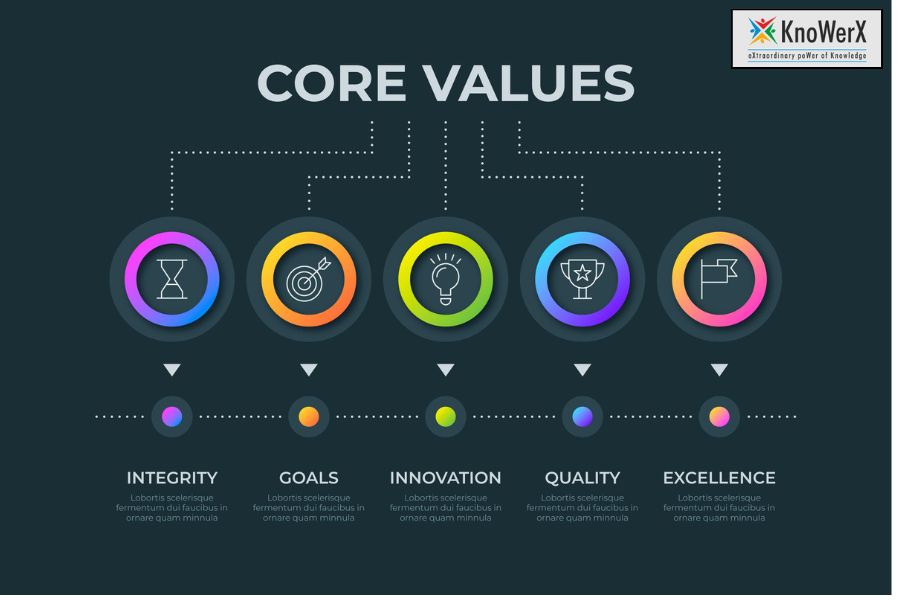
Six Sigma Basic Principles: What They Don’t Tell You! At KnoWerX, we believe that understanding the Six Sigma Basic Principles goes beyond textbooks and buzzwords. With over 33 years of collective expertise and more than 26 years in education and consultancy, we have trained and empowered professionals across India and abroad. Our goal is simple equip you with knowledge that actually works in the real world. So, let’s break down the Six Sigma Basic Principles in a way that most training programs don’t. Here are essential tips to help you adopt the right mindset and methodology when approaching Six Sigma: Understand the True Meaning of “Define” Six Sigma Basic Principles start with the Define phase, but it’s not just about identifying a problem. It’s about defining the customer’s voice, setting clear objectives, and ensuring all stakeholders understand the value of solving that problem. Most failures happen because teams misunderstand what’s actually wrong or chase the wrong problem. A strong “Define” stage eliminates misdirection early. Measure What Truly Matters Measurement isn’t just about data collection. A core part of the Six Sigma Basic Principles is distinguishing between “nice-to-have” data and critical-to-quality (CTQ) metrics. Focus your efforts on what directly impacts the customer and process performance. Too much irrelevant data can cloud judgement measure only what aligns with your improvement goals. Analyse Without Bias While analysis is a key pillar of the Six Sigma Basic Principles, what they don’t often tell you is how bias can creep in. Use root cause analysis tools objectively, and avoid cherry-picking data to fit assumptions. Look deeper than surface-level causes. Bias in this phase can sabotage even the most well-intentioned project. Improve Through Small, Sustainable Changes The Improve phase isn’t about massive overhauls it’s about incremental, intelligent modifications. Focus on low-cost, high-impact solutions that are sustainable and scalable. Consistency over complexity is the secret. Don’t underestimate the power of small tweaks that add up over time. Control = Continuous Vigilance Control doesn’t mean you’re done. One of the Six Sigma Basic Principles often overlooked is that control is ongoing. Use control charts, KPIs, and audit systems to maintain and improve results over time. Sustainability is a mindset, not a milestone. Even the best improvements can backslide without proper control mechanisms. Culture Is Key Adopting the Six Sigma Basic Principles isn’t just about tools and methods it’s a cultural shift. Embed Six Sigma thinking across all departments and encourage collaboration, accountability, and continuous improvement from the ground up. Success thrives in organisations where every employee is part of the quality journey, not just the quality team. The Right Way to Approach Six Sigma Don’t just “learn” Six Sigma live it. Align your Six Sigma strategy with your company’s goals. Get certified with an institute that offers real-world application, not just theory. Invest in data literacy across teams. Choose a reliable training partner like KnoWerX, who blends deep industry experience with practical insight. Approaching Six Sigma the right way means integrating its principles into your everyday decision-making, not treating it as a one-time project. When teams are aligned with business goals and equipped with practical, data-driven tools, Six Sigma becomes a powerful engine for transformation. At KnoWerX, we focus on not just teaching Six Sigma but preparing professionals to apply it where it matters most in real business environments. Frequently Asked Questions Ending Notes Mastering the Six Sigma Basic Principles isn’t just about passing a certification it’s about transforming how you think, solve problems, and drive value within your organisation. The real secret lies in applying these principles with clarity, consistency, and commitment. At KnoWerX, we don’t just provide training we empower professionals to implement Six Sigma effectively in dynamic business environments. Image Reference: Freepik Disclaimer: All trademarks, logos, and brand names are the property of their respective owners. All company, product, and service names used in this website are for identification purposes only. Use of these names, trademarks, and brands does not imply endorsement.
Strengthening Value Proposition and Value Chains
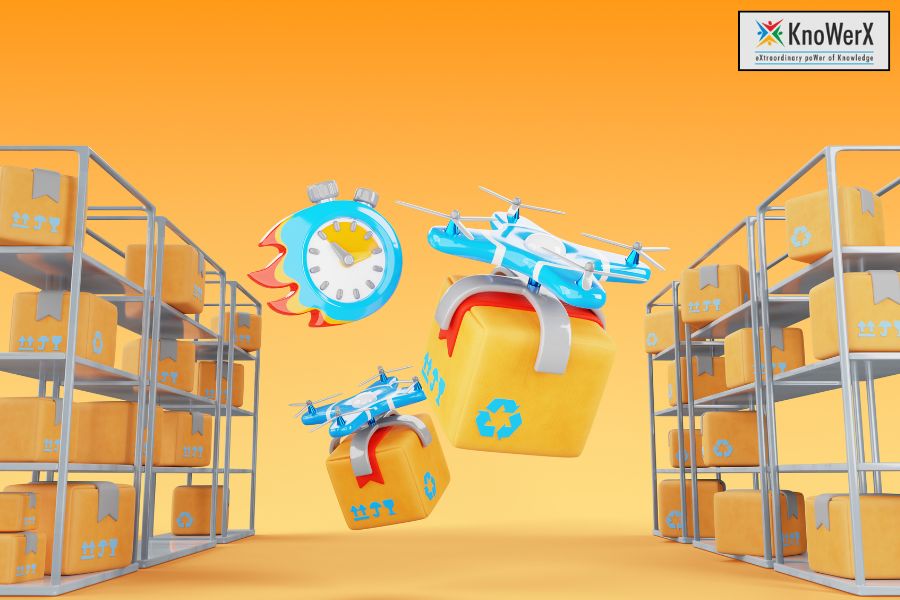
Strengthening Value Proposition and Value Chains Let’s talk about something that can really make your business stand out: a compelling value proposition. It’s like your secret sauce it sets you apart from the crowd and shows your customers exactly why you’re the perfect fit for them. The trick is to zero in on what’s bugging them (their pain points) and then spell out how your solution makes their lives better. Simple, right? A solid Value Proposition and Value Chains strategy is like a trusty compass for your whole team. It’s not just a fancy statement it guides decisions everywhere, from the warehouse to the boardroom. When everyone’s on the same page, magic happens. Know Your Customer Inside Out Your value proposition starts with your people the ones you’re serving. Get curious: What keeps them up at night? What do they dream about solving? Chat with them, listen hard, and dig into what they really need. When your Value Proposition and Value Chains reflect their world, you’re not just selling you’re solving. And that’s when they stick around. Craft a Clear, Bold Promise Don’t beat around the bush. Tell your customers exactly what you’re bringing to the table and why it’s a game-changer. Skip the jargon and make it real: “We’ll save you time,” or “We’ll cut your stress in half.” A strong, simple promise ties your Value Proposition and Value Chains together it’s the heartbeat of why you exist. Align Internal Processes with Value Creation Picture this: every step, from ordering supplies to dropping off the final product, works together like a well-oiled machine. No more departmental standoffs or “that’s not my job” vibes. When teams break down walls and chase goals that actually matter to your customers, you’re not just making their day you’re saving some cash along the way too. It’s a win-win! Optimise Supply Chain Activities Let’s get practical. A smooth supply chain is your ticket to staying ahead. Think smart forecasting, cutting down on stuff sitting around gathering dust, and maybe even letting robots handle the boring bits. At KnoWerX, we’ve seen firsthand how our supply chain training helps folks like you turn data into decisions that make everything run better. It’s pretty cool to watch! Build Resilience in Value Chains Life’s unpredictable supply chains aren’t immune. But you can be ready. Stock up a little extra, build strong ties with your suppliers, and don’t put all your eggs in one basket. When your Value Proposition and Value Chains can roll with the punches, your customers feel the difference. They’ll trust you to deliver, rain or shine. Measure and Adapt Continuously Keep your finger on the pulse. Are your customers happy? Are orders flying out the door on time? What’s the bottom line looking like? Dig into the numbers and tweak things as you go. With a little data love, your Value Proposition and Value Chains stay nimble ready to jump on opportunities or dodge curveballs. Ending Notes At KnoWerX, we’re all about helping you build something that lasts. With 26+ years of training and consulting under our belt, we’re here to arm you with the know-how and tools to shine. Whether you want to level up your value game, streamline your supply chain, or future-proof your operations, we’ve got your back. Our expert-led programs and real-world strategies ensure you stay ahead in a fast-changing market. Let’s turn challenges into opportunities and make your business unstoppable Image Reference: Freepik Disclaimer: All trademarks, logos, and brand names are the property of their respective owners. All company, product, and service names used in this website are for identification purposes only. Use of these names, trademarks, and brands does not imply endorsement.
These Types of Demand Are Driving Massive Profits!
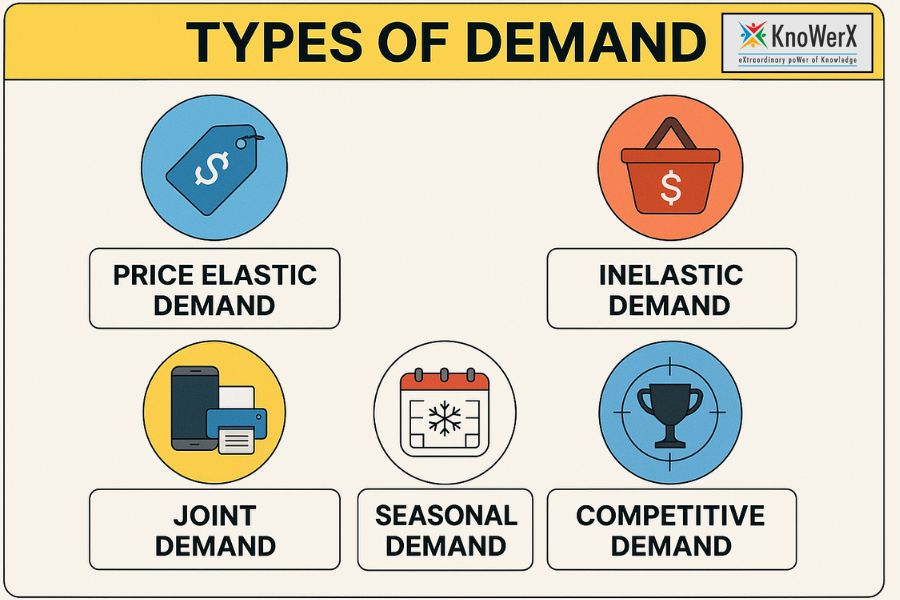
These Types of Demand Are Driving Massive Profits! Behind every successful business lies one powerful force demand. It’s the engine that drives sales, shapes strategy, and fuels profitability. But not all demand is created equal. From price-sensitive buyers to seasonal spikes and industry-driven needs, understanding the different types of demand is key to unlocking business growth. In this article, we’ll explore the most profitable demand types, reveal how businesses turn them into revenue streams, and show how supply chain professionals can use this knowledge to gain a competitive edge especially with guidance from KnoWerX, a leader in supply chain management education. 1. The Hidden Power of Demand Demand is the lifeblood of every business. Without demand, there is no reason to produce, no sales to make, and ultimately, no revenue to count. It is the unseen engine behind profits. There are various types of demand, each with its own influence on sales strategy. These include price elasticity, seasonality, and even competition-based demand — all crucial to how products perform in the market. Understanding and harnessing different types of demand can be a game-changer. Businesses that tailor their offerings and marketing based on dem and patterns often see faster growth, better customer retention, and higher margins. 2. Breaking Down the Most Profitable Types of Demand Here, we identify six highly impactful demand types and how businesses can strategically respond to each. 1 – Price Elastic Demand Consumers are highly sensitive to price changes in this type of demand. Lowering prices even slightly can lead to a significant increase in sales volume. Profit strategy: Leverage tactics like limited-time discounts, flash sales, and penetration pricing. These techniques attract price-sensitive customers, especially in competitive or commoditised markets. 2 – Inelastic Demand Here, consumers continue to buy regardless of price fluctuations. These are often necessities or products with few substitutes, like medicine or fuel. Profit strategy: Adopt premium pricing, especially for essential or high-value items. Margins can be maintained or increased without fearing a drop in demand. 3 – Derived Demand This demand exists because of the demand for another product or service. For example, the demand for steel arises from the demand for construction and automobiles. Profit strategy: Position your business within the B2B supply chain to benefit from upstream or downstream demand. Anticipate industry trends to align offerings with growth sectors. 4 – Joint Demand Products are often used together, so demand for one boosts the other. Printers and ink cartridges, or smartphones and protective cases, are classic examples. Profit strategy: Create product bundles or offer upsells that add value. This not only boosts average order value but also enhances customer satisfaction by delivering complete solutions. 5- Seasonal Demand Consumer interest surges during specific periods, such as holidays or weather changes. Think of ski gear in winter or air conditioners in summer. Profit strategy: Plan seasonal promotions well in advance and manage inventory smartly. Capitalising on high-demand windows can lead to a spike in revenues while minimising overstock risks. 6 – Competitive Demand Occurs when multiple products or brands satisfy the same need. For instance, Coke and Pepsi compete for the same consumer base. Profit strategy: Focus on brand differentiation, unique features, and emotional connections. Strong brand positioning can tip customer preference in your favour even in crowded markets. 3. How Businesses Turn Demand Types into Revenue Machines Successful businesses analyse consumer behaviour and evolving market trends. By doing so, they can match the right demand type to the right product or service strategy. Product development, pricing, and promotions must align with identified demand types. Whether through seasonal offerings or competitively priced innovations, aligning business decisions with demand can drive long-term revenue. Real-world case study: Consider how Starbucks uses seasonal demand (e.g., Pumpkin Spice Latte) and competitive demand (customisable coffee vs local cafés) to stay ahead. Their agile marketing and limited-time offers keep customers engaged year-round. 4. Adapting Your Business to Maximise Demand-Based Profits Invest in demand forecasting tools and advanced analytics to anticipate trends. Knowing when and how much customers will buy empowers smarter inventory, staffing, and pricing decisions. Marketing and sales efforts must be tailored to match the specific type of demand your product faces. For example, promotional campaigns should target price-sensitive consumers if your product faces elastic demand. Agility and innovation are key to surviving and thriving in demand-driven markets. Rapidly iterating on product features, bundles, or pricing models can help you capitalise on emerging demand types and outpace competitors. 5. The Role of Innovation in Shaping Demand Types Innovation doesn’t just respond to demand — it creates it. Companies that consistently innovate can shift consumer behaviour and even invent entirely new types of demand. Disruptive products often turn latent demand into mainstream markets. Think of how Netflix transformed the entertainment industry by responding to unmet desires for convenience and choice. Technology-driven businesses use R&D to unlock price-inelastic or joint demand. For example, smart homes combine hardware and software into bundles, enhancing long-term customer value. 6. Common Mistakes Businesses Make with Demand Strategy One-size-fits-all pricing often fails in markets with varying demand types. Businesses that ignore elasticity risk losing customers or underpricing high-demand products. Failing to align inventory with seasonal or derived demand leads to missed profits. Overstocking or stockouts can harm brand trust and create operational inefficiencies. Misreading competitive demand can weaken brand positioning. Brands that don’t differentiate may be viewed as interchangeable and get lost in price wars. Frequently Asked Questions Ending Remark At KnoWerX, we understand that recognising and responding to different types of demand is the cornerstone of any successful supply chain strategy. In today’s fast-paced and competitive market, businesses can no longer rely on one-size-fits-all approaches. They need professionals who can interpret demand patterns — whether price elasticity, seasonal surges, or derived and competitive demand — and translate them into actionable, profit-driving decisions. Our courses are designed to equip supply chain leaders with the tools and insights needed to forecast accurately, optimise inventory, and align operations with real market needs. Through frameworks, real-world case
